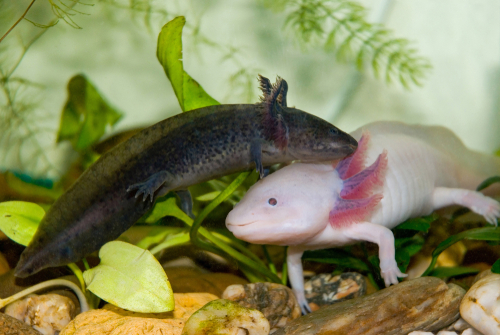Axolotls, also known as Mexican walking fish, are fascinating creatures that have become increasingly popular as pets in recent years. As with any pet, it is important to understand their dietary needs in order to keep them healthy and happy.
In this article, we will explore what to feed axolotls, including their natural diet, feeding habits, and the best types of food to provide.
Understanding Axolotl’s Natural Diet Axolotls are carnivorous and their natural diet consists mainly of small fish, insects, and other aquatic invertebrates. In captivity, it is important to replicate this diet as closely as possible to ensure their nutritional needs are met.
Feeding them a diet that is too high in fat or protein can lead to health problems, while a diet that is too low in essential nutrients can also be harmful.
Feeding Baby Axolotls Baby axolotls have different dietary needs than adults and require more protein to support their growth and development.
They should be fed small, live foods such as daphnia, brine shrimp, and bloodworms several times a day. As they grow, their diet can be gradually transitioned to include more adult foods.
Contents
Key Takeaways on What to Feed Axolotl
- Axolotls are carnivorous and require a diet that replicates their natural diet in the wild.
- Baby axolotls require more protein than adults to support their growth and development.
- Feeding axolotls a diet that is too high or low in essential nutrients can lead to health problems.
Check out these other related posts:
Understanding Axolotl’s Natural Diet
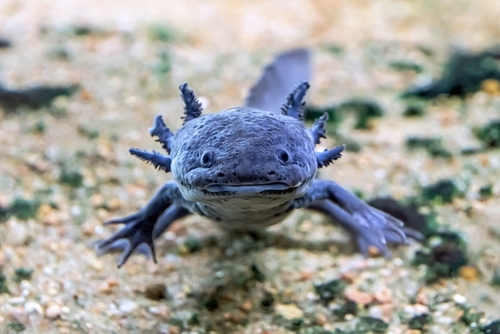
Axolotls are wild, carnivorous amphibians that feed on a variety of prey in their natural habitat. Their diet consists mainly of small aquatic animals such as insects, crustaceans, and small fish.
In the wild, axolotls are opportunistic feeders, which means they will eat whatever prey is available to them.
Axolotls are carnivores, which means they require a diet that is high in protein. In captivity, they can be fed a variety of live or frozen foods, including bloodworms, brine shrimp, daphnia, krill, and small pieces of fish.
It is important to vary their diet to ensure they receive all the necessary nutrients.
It is important to note that axolotls have a slow metabolism and should not be overfed. Overfeeding can lead to obesity and other health problems. It is recommended to feed adult axolotls once every two to three days, while juveniles should be fed daily.
Feeding Baby Axolotls
Ideal Foods for Baby Axolotls
When it comes to feeding baby axolotls, it is important to provide them with the right foods to ensure their growth and development.
Live foods are the best option for baby axolotls as they are more nutritious and easier for them to digest. The following are some of the ideal foods for baby axolotls:
- Live Daphnia: These small crustaceans are a great source of protein and are easy for baby axolotls to consume. They are also high in calcium, which is important for the development of strong bones.
- Baby Brine Shrimp: These tiny shrimp are rich in protein and are a great source of nutrition for baby axolotls. They are also easy to digest and can help stimulate their appetite.
- Live Brine Shrimp: These larger shrimp are also a good source of protein and can be fed to baby axolotls once they are a little bigger. They are also high in fat, which can help provide the energy needed for growth.
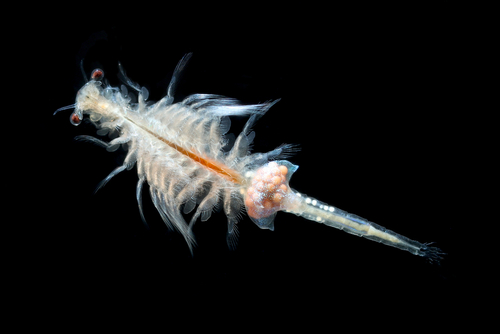
It is important to note that baby axolotls should not be fed any dry or processed foods as they can be difficult for them to digest and can lead to digestive problems.
Additionally, it is important to ensure that the live foods are clean and free from any harmful bacteria or parasites.
Feeding Adult Axolotls
Ideal Foods for Adult Axolotls
Adult axolotls are carnivorous and require a diet rich in protein. They can be fed a variety of foods, including worms, fish, pellets, and live food.
Earthworms are an excellent source of protein for adult axolotls. They are readily available and can be purchased from most bait shops. Axolotls can be fed earthworms once or twice a week, depending on their size and appetite.
Fish is another good source of protein for adult axolotls. They can be fed small pieces of fish, such as salmon or tuna, once or twice a week. It is important to remove any bones from the fish before feeding it to the axolotl.
Pellets are a convenient food option for adult axolotls. They can be purchased from pet stores and are specifically formulated for axolotls. Pellets should be fed to axolotls once or twice a week, depending on their size and appetite.
Live food, such as brine shrimp or bloodworms, can be fed to adult axolotls as a treat. They should only be fed live food once a week, as it is not a complete diet for axolotls.
It is important to note that axolotls should not be overfed. Overfeeding can lead to obesity and other health problems. Adult axolotls should be fed once or twice a week, depending on their size and appetite.
It is also important to vary their diet to ensure they are receiving all the necessary nutrients.
The Role of Live Foods

Live foods are an essential part of an axolotl’s diet. They provide a variety of nutrients that are not found in commercial foods. In this section, we will discuss the benefits and risks of feeding live foods to axolotls.
Benefits and Risks of Live Foods
Benefits
Live foods are a great source of protein and other essential nutrients. They are also more natural and provide a more varied diet than commercial foods. Some of the benefits of feeding live foods to axolotls include:
- Improved growth and development: Live foods are rich in protein and other nutrients that are essential for growth and development. They can help axolotls grow faster and become stronger.
- Improved immune system: Live foods contain essential vitamins and minerals that can help boost the immune system of axolotls. This can help them fight off diseases and infections.
- Improved digestion: Live foods are easier for axolotls to digest than commercial foods. This can help prevent digestive problems and improve overall health.
Risks
While live foods can provide many benefits, there are also some risks associated with feeding them to axolotls. Some of the risks include:
- Parasites and diseases: Live foods can carry parasites and diseases that can be harmful to axolotls. It is important to only feed them live foods that are healthy and free from parasites.
- Overfeeding: Live foods are high in protein and can be addictive for axolotls. Overfeeding can lead to obesity and other health problems.
- Cost and availability: Live foods can be expensive and may not be available in all areas. It is important to consider the cost and availability of live foods before deciding to feed them to axolotls.
Frozen and Freeze-Dried Foods
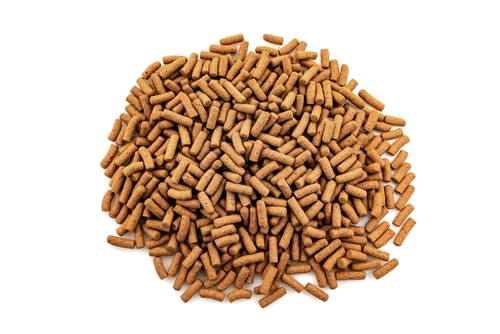
Choosing Quality Frozen Foods
When it comes to feeding axolotls, frozen and freeze-dried foods are a great option. Frozen foods are typically more nutritious than freeze-dried foods because they retain more of their natural nutrients.
When choosing frozen foods, it’s important to look for high-quality options that are free from preservatives and additives.
Axolotls are carnivorous and require a diet that is high in protein. Frozen foods like bloodworms, brine shrimp, and krill are great options for meeting their dietary needs.
These foods can be found at most pet stores and are typically sold in small, frozen cubes.
When feeding frozen foods, it’s important to thaw them out first. This can be done by placing the frozen cube in a small dish of water and allowing it to thaw for a few minutes. Once the food has thawed, it can be added to the axolotl’s tank.
Freeze-dried foods are another option for feeding axolotls. These foods are typically less nutritious than frozen foods, but they are more convenient to store and use. Freeze-dried foods can be found in a variety of options, including bloodworms, brine shrimp, and krill.
When choosing freeze-dried foods, it’s important to look for options that are free from preservatives and additives. It’s also important to soak the food in water before feeding it to the axolotl.
This will help to prevent digestive issues and ensure that the axolotl is able to properly digest the food.
Feeding Frequency and Portion Sizes
Axolotls are opportunistic feeders and will eat whenever food is available. However, it is important to maintain a proper feeding schedule to prevent overfeeding and obesity.
The frequency of feeding depends on the age and size of the axolotl. Younger and smaller axolotls should be fed more frequently than older and larger ones. Generally, axolotls should be fed 2-3 times a week.
The portion sizes should also be adjusted according to the size of the axolotl. A good rule of thumb is to feed them a portion that is about the size of their head. Overfeeding can lead to health problems such as obesity and digestive issues.
It is important to monitor the axolotl’s eating habits and adjust the feeding schedule and portion sizes accordingly. If an axolotl is not eating, it may be a sign of stress or illness.
Understanding Axolotl’s Eating Habits
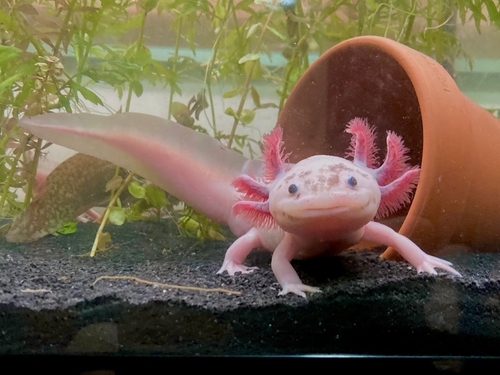
Axolotls are carnivorous and have a healthy appetite. They are known to eat a variety of foods, including small fish, shrimp, and worms. Understanding their eating habits is essential to keep them healthy and well-fed.
Axolotls swallow their food whole and do not have teeth to chew. Therefore, it is important to feed them appropriately sized food that they can swallow comfortably. Small pieces of meat or fish are not suitable for axolotls as they can choke on them.
Nightcrawlers are a popular food choice for axolotls as they are easy to digest and offer a good source of nutrition. However, it is important to ensure that the nightcrawlers are not too large for the axolotl to swallow whole.
Axolotls are nocturnal animals and are most active at night. Therefore, it is recommended to feed them during the night to ensure that they eat when they are most active.
Health Implications of Diet
The diet of an axolotl is critical for its health and well-being. A balanced diet is essential to maintain a healthy axolotl. Feeding them a diet that is deficient in nutrients can lead to various health problems. Below are some of the health implications of diet for axolotls.
1. Healthy Diet
A healthy diet for axolotls should consist of a variety of foods that provide all the necessary nutrients.
A balanced diet should include live or frozen foods such as bloodworms, brine shrimp, earthworms, and small pieces of fish. Pellets can also be included in the diet, but they should not be the only source of food.
2. Parasites
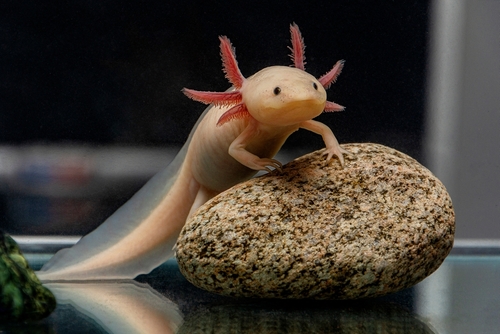
Feeding axolotls live foods can expose them to parasites. It is essential to ensure that the live foods are healthy and free from parasites.
Parasites can cause various health problems, including digestive issues, lethargy, and even death. It is recommended to quarantine the live foods before feeding them to the axolotls.
3. Diseases
A poor diet can weaken the immune system of an axolotl, making it more susceptible to diseases.
A diet that lacks essential nutrients can lead to various health problems, including metabolic bone disease, skin infections, and fungal infections. It is essential to provide a balanced diet to maintain a healthy immune system.
4. Impaction
Overfeeding or feeding inappropriate food can lead to impaction in axolotls. Impaction occurs when the axolotl is unable to digest the food, leading to blockages in the digestive system.
This can cause various health problems, including constipation, lethargy, and even death. It is essential to feed axolotls appropriate food in the right quantity to avoid impaction.
Axolotl Tank Conditions and Feeding
Axolotls are aquatic creatures that require specific tank conditions to thrive. When setting up a tank for an axolotl, it is important to consider factors such as water quality, temperature, and substrate.
The tank should be large enough to accommodate the axolotl comfortably, with a minimum size of 20 gallons for a single adult axolotl. The water should be kept clean and well-aerated, with a pH level between 6.5 and 8.0. A filtration system is recommended to maintain water quality.
Axolotls prefer a cool water temperature between 60 and 68 degrees Fahrenheit. It is important to avoid sudden temperature changes, as this can be stressful for the axolotl and may lead to health problems.
When selecting a substrate for the tank, it is important to choose a material that will not harm the axolotl or affect water quality. Sand, fine gravel, or bare-bottom tanks are all suitable options.
In terms of feeding, axolotls are carnivorous and require a diet of live or frozen foods. They will eat a variety of prey, including earthworms, bloodworms, brine shrimp, and small pieces of fish.
It is important to avoid feeding them anything that is too large or difficult to digest, as this can lead to health problems..
Choosing the Right Axolotl Food
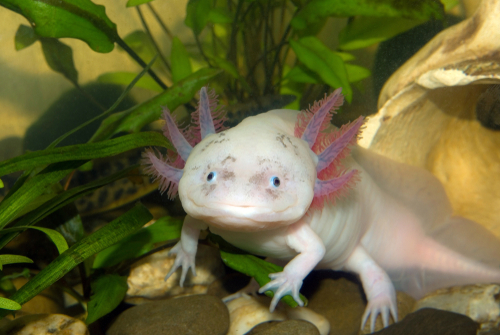
When it comes to feeding an axolotl, it is important to choose the right type of food to ensure they receive the necessary nutrients to maintain their health and wellbeing.
Axolotls are carnivorous and require a diet high in protein, so it is important to select foods that meet their nutritional requirements.
One popular option for axolotl food is sinking pellets. These pellets are designed to sink to the bottom of the tank, making them easily accessible for the axolotl to consume.
They are also formulated to provide a balance of protein, vitamins, and minerals to support the axolotl’s growth and development. Sinking pellets are also affordable and widely available, making them a convenient choice for many axolotl owners.
Another option for axolotl food is live or frozen foods such as bloodworms, brine shrimp, or blackworms. These foods are highly nutritious and provide a natural source of protein for the axolotl.
However, they can be more expensive and require additional preparation time before feeding.
It is important to note that axolotls should not be fed insects or other terrestrial animals, as these foods may contain harmful toxins or pesticides that can be harmful to the axolotl’s health.
Common Mistakes in Feeding Axolotls
Feeding axolotls can be a tricky task, and there are some common mistakes that many owners make. Here are a few things to keep in mind when feeding your axolotl:
1. Overfeeding
One of the most common mistakes made when feeding axolotls is overfeeding. Axolotls are prone to obesity, which can lead to a host of health problems.
Overfeeding can also lead to an excessive amount of waste in the tank, which can cause water quality issues.
2. Feeding Insects
Axolotls are carnivores and require a protein-rich diet. However, feeding insects to axolotls can be dangerous. Insects can carry harmful bacteria that can make your axolotl sick.
It is best to stick to feeding your axolotl fish or commercially available axolotl pellets.
3. Feeding Live Food
Feeding live food to axolotls can be tempting, but it can also be dangerous. Live food can carry bacteria and parasites that can make your axolotl sick. Additionally, live food can stress out your axolotl and cause it to become aggressive.
4. Feeding Fatty Foods
Axolotls require a low-fat diet. Feeding your axolotl fatty foods such as beef or pork can lead to health problems such as fatty liver disease. Stick to feeding your axolotl lean proteins such as fish or axolotl pellets.
5. Inconsistent Feeding Schedule
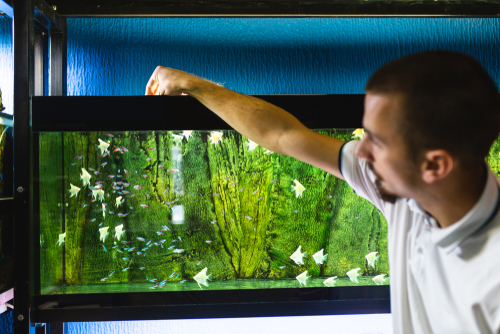
Axolotls thrive on consistency, and feeding them on an inconsistent schedule can cause stress. It is important to establish a feeding schedule and stick to it.
Feed your axolotl at the same time every day, and make sure to remove any uneaten food from the tank after feeding..
Optimizing Axolotl Feeding Practices

Axolotls, with their distinctive features and carnivorous diet, require specific feeding methods to ensure their well-being. They have short teeth designed for gripping rather than tearing, so they typically gulp down their food whole. To accommodate this, the food needs to be appropriately sized to prevent choking hazards.
Let’s explore the tools and techniques that can make axolotl feeding efficient and safe.
1. Essential Feeding Tools:
- Long Tank Plant Tweezers: An indispensable tool for axolotl caretakers, these tweezers allow you to feed your axolotl with precision. Choose tweezers with smooth edges to avoid any accidental injuries to your pet.
- Mini Dishes and Plastic Cups: Incorporating these into your tank can significantly minimize mess during feeding times. They provide a designated spot for feeding, aiding in cleaner and more organized meal times.
- Turkey Baster: This tool is incredibly useful for feeding pellets to your axolotl. It also doubles as a handy instrument for removing uneaten food, helping maintain water quality.
2. Axolotl Feeding Chart and Schedule:
Creating an axolotl feeding chart can help maintain a regular feeding schedule, ensuring your pet receives the right amount of nutrition at consistent intervals. This chart should factor in the age and size of your axolotl, adjusting portions as needed.
3. Foods to Avoid:
- Bugs and Insects: While axolotls might consume these in the wild, captive axolotls should not be fed bugs and insects due to the risk of parasites and diseases.
- Feeder Fish: These are often carriers of diseases and can introduce pathogens into your tank. Stick to safer options like pellets, earthworms, and brine shrimp.
- Human Foods: Axolotls cannot digest processed meats or poultry that are typical in human diets. Feeding them such foods can lead to digestive issues.
- Hard-bodied Foods: Foods with tough exoskeletons, like crayfish, are a no-go due to the risk of internal injuries from their hard shells.
When considering what to feed your axolotl, focus on foods that align with their natural dietary habits and physical capabilities. Providing a balanced and appropriate diet is key to maintaining their health and longevity.
Conclusion
Feeding axolotls is a crucial aspect of their care. Axolotls have unique nutritional needs, and their diet should consist of a variety of protein-rich foods. It is essential to provide them with a balanced diet to ensure their overall health and well-being.
Axolotls are carnivorous and require a diet that is high in protein. They can be fed a variety of live and frozen foods, including bloodworms, brine shrimp, and blackworms.
Commercially available axolotl pellets are also a good option. It is important to avoid feeding them fatty or oily foods, as this can lead to health problems.
Axolotls should be fed small amounts of food several times a day, rather than one large meal. This helps to prevent overfeeding and reduces the risk of digestive problems.
It is also important to ensure that the water in the tank is clean and free from any debris or uneaten food.
Frequently Asked Questions
What types of food are safe for axolotls to eat?
Axolotls are carnivorous and mainly eat small aquatic animals like worms, snails, and insects.
They can also eat small pieces of fish and shrimp. It is important to avoid feeding them any food that is too large for their mouths or that could cause choking.
How often should I feed my axolotl?

Axolotls should be fed once a day or every other day, depending on their age and size. Younger axolotls should be fed more frequently than adults. Overfeeding can lead to obesity and other health issues, so it is important to monitor their food intake.
Can axolotls eat crickets?
Axolotls can eat crickets, but they should only be fed as an occasional treat. Crickets should be gut-loaded before feeding to ensure that they are providing proper nutrition.
What is the best diet for axolotls?
The best diet for axolotls consists of a variety of small aquatic animals like worms, snails, and insects. Commercial axolotl pellets can also be fed as a supplement, but they should not be the primary source of food.
What should I avoid feeding my axolotl?
Axolotls should not be fed any food that is too large for their mouths or that could cause choking. They should also not be fed any live prey that could potentially harm them, such as large fish or crayfish.
How do I know if my axolotl is getting enough food?
Axolotls should be monitored for signs of overfeeding or underfeeding. An axolotl that is getting enough food will have a healthy weight and be active and alert. An axolotl that is not getting enough food may become lethargic and lose weight.

Ian Sterling, founder of Fishlab.com, began his aquarium journey over 30 years ago, driven by a deep fascination for fish and their diverse personalities. His website, Fishlab.com, is dedicated to making fishkeeping accessible and enjoyable, offering beginner-friendly guidance, expert insights, and a community for aquarists to connect and share experiences.


